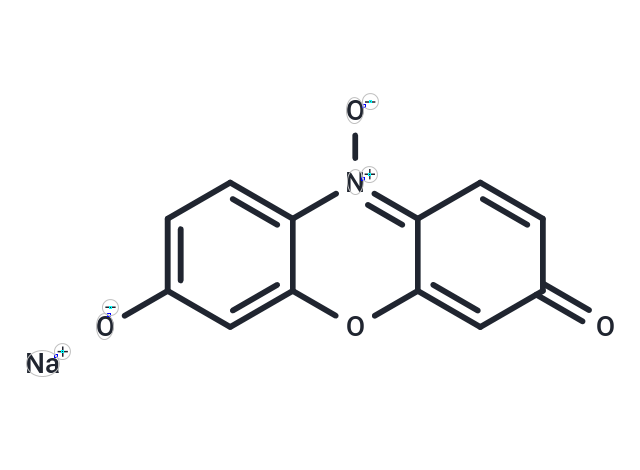Shopping Cart
Remove All Your shopping cart is currently empty
Your shopping cart is currently empty
Resazurin sodium (Resazurin sodium salt) salt is a blue non-fluorescent dye,is widely used as a metabolic indicator for living cells

| Pack Size | Price | USA Warehouse | Global Warehouse | Quantity |
|---|---|---|---|---|
| 500 mg | $29 | - | In Stock | |
| 1 mL x 10 mM (in DMSO) | $29 | In Stock | In Stock |
| Description | Resazurin sodium (Resazurin sodium salt) salt is a blue non-fluorescent dye,is widely used as a metabolic indicator for living cells |
| In vitro | Resazurin inhibits the growth of a broad range of N. gonorrhoeae isolates, including those resistant to multiple antibiotics[1] |
| In vivo | In vivo resazurin did not limit the colonisation of mice with N. gonorrhoeae following vaginal infection.?The ineffectiveness of resazurin in vivo is likely due to its interaction with serum albumin, which completely diminishes its antimicrobial activity[1]. |
| Cell Research | Instructions I. Cell viability assay 1. Prepare Resazurin solution: Dissolve Resazurin sodium in saline or PBS to prepare a solution of appropriate concentration, usually 10-100 μM (optimal concentration can be adjusted according to cell type). 2. Add cells: Add Resazurin solution to cell culture medium (usually 10% of the total amount). 3. Incubate: Incubate cells with Resazurin solution for 30 minutes to 2 hours. Metabolically active cells will reduce Resazurin to Resorufin and emit fluorescence. 4. Measure fluorescence: Use a fluorescence plate reader to measure fluorescence intensity, usually at an excitation wavelength of 530-560 nm and an emission wavelength of 590 nm. The fluorescence signal is proportional to the number of viable cells. II. Microbial growth monitoring 1. Prepare Resazurin solution: Dissolve Resazurin sodium in culture medium at a concentration of 10-50 μM. 2. Add to microbial culture: Add Resazurin solution to bacterial or fungal culture. 3. Incubate: Allow microorganisms to grow under appropriate conditions and monitor the reduction of Resazurin to Resorufin. 4. Measure fluorescence: Use a fluorimeter to monitor fluorescence intensity. Increased fluorescence indicates microbial growth. III. Drug screening and toxicity testing 1. Prepare Resazurin solution: Prepare Resazurin sodium solution as described above. 2. Add to drug-treated cells: Add Resazurin solution to drug-treated cells or animal samples to evaluate the effects of the drug. 3. Incubate: Incubate cells according to experimental requirements. 4. Measure fluorescence: Use a fluorescence imaging system to monitor fluorescence intensity and evaluate cell activity after drug treatment. |
| Synonyms | Resazurin sodium salt, Diazoresorcinol (sodium) |
| Molecular Weight | 251.17 |
| Formula | C12H6NNaO4 |
| Cas No. | 62758-13-8 |
| Smiles | [Na+].[O-]c1ccc2[n+]([O-])c3ccc(=O)cc3oc2c1 |
| Relative Density. | no data available |
| Color | Black |
| Appearance | Solid |
| Storage | keep away from direct sunlight | Powder: -20°C for 3 years | In solvent: -80°C for 1 year | Shipping with blue ice/Shipping at ambient temperature. | ||||||||||||||||||||
| Solubility Information | DMSO: 2.52 mg/mL (10.03 mM), Sonication is recommended. | ||||||||||||||||||||
Solution Preparation Table | |||||||||||||||||||||
DMSO
| |||||||||||||||||||||
| Size | Quantity | Unit Price | Amount | Operation |
|---|

Copyright © 2015-2026 TargetMol Chemicals Inc. All Rights Reserved.